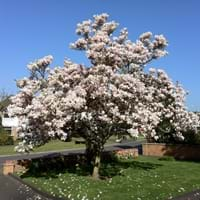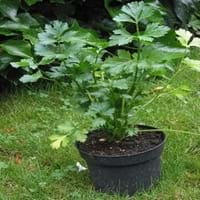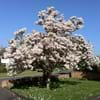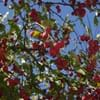Life Span
Perennial
Annual or Biennial
Origin
Not Available
Europe, Northern Africa, Asia
Types
Gwillimia, Manglietia, Kmeria
Not Available
Number of Varieties
Not Available
Habitat
Subtropical climates, Tropical regions
Coastal Regions, Marshy ground, Wet ground
USDA Hardiness Zone
6-9
Not Available
Sunset Zone
Not Available
Not Available
Habit
Oval or Rounded
Upright/Erect
Flower Color
Purple, Pink, Light Pink, Rose
White
Flower Color Modifier
Bicolor
Bicolor
Fruit Color
Brown
Tan, Brown
Leaf Color in Spring
Green
Light Green
Leaf Color in Summer
Green
Green, Light Green
Leaf Color in Fall
Green, Yellow green, Sandy Brown
Green, Light Green
Leaf Color in Winter
Not Available
Not Available
Leaf Shape
Ovate
Irregular
Plant Season
Spring, Summer
Spring, Summer
Sunlight
Full Sun, Partial Sun
Full Sun
Type of Soil
Clay, Loam, Sand
Loam
The pH of Soil
Acidic, Neutral
Neutral, Alkaline
Soil Drainage
Well drained
Well drained
Bloom Time
Spring, Late Spring
Late Spring
Tolerances
Not Available
Drought
Where to Plant?
Ground
Container, Ground
How to Plant?
Seedlings, Transplanting
Seedlings, Transplanting
Plant Maintenance
Medium
Low
Watering Requirements
Prefer drip-irrigation instead of Over-head watering
Keep ground moist, Requires regular watering
In Summer
Lots of watering
Lots of watering
In Spring
Moderate
Moderate
In Winter
Average Water
Average Water
Soil pH
Acidic, Neutral
Neutral, Alkaline
Soil Type
Clay, Loam, Sand
Loam
Soil Drainage Capacity
Well drained
Well drained
Sun Exposure
Full Sun, Partial Sun
Full Sun
Pruning
Prune if you want to improve plant shape
Remove damaged leaves, Remove shoots
Fertilizers
Fertilize in late fall, fertilize in spring, Requires high amount of nitrogen
Less fertilizing
Pests and Diseases
Aphids, Bacterial Blight, Canker, Crown gall, Hoplia beetle, Leaf burn, Leaf spot, Mealybugs, Powdery mildew, Red blotch, Scorch, Soft scales, Thripes, Wetwood
Bacteria, Downy mildew, Fungal Diseases, fungus, Mosaic viruses, Pink Root, Red blotch
Plant Tolerance
Not Available
Frost
Flower Petal Number
Single
Single
Fragrant Bark/Stem
No
Yes
Foliage Texture
Coarse
Coarse
Foliage Sheen
Matte
Glossy
Attracts
Not Available
Insects, Mice, Rodents, Spider Mites
Allergy
Not Available
Irritation to stomach
Aesthetic Uses
Showy Purposes
Not Available
Beauty Benefits
Treatment of Dark Spots
Good for skin, Improve skin condition, Moisturizing, Skin Problems
Environmental Uses
Air purification
Air purification, Food for animals, Food for birds, Food for insects
Medicinal Uses
Alzheimer’s Disease, Anxiety, Cancer, Digestion problems, Liver problems, Menstrual Cramps, Respiratory Disorders, Weight loss
Cancer, Combats Stress, Eye Problems, High blood pressure, High cholestrol, Indigestion, Inflammation, Weight loss
Part of Plant Used
Whole plant
Leaves, Seeds
Other Uses
Used as Ornamental plant, Used for its medicinal properties
Employed in herbal medicine, Oil is used in perfume, soaps, creams, etc., Used As Food, Used for its medicinal properties, Used as a spice
Used As Indoor Plant
Yes
Yes
Used As Outdoor Plant
Yes
Yes
Garden Design
Feature Plant, Foundation, Shade Trees
Container, Edible, Herb / Vegetable
Botanical Name
MAGNOLIA 'Alexandria'
APIUM graveolens
Common Name
Alexandria Magnolia, Magnolia
Celery
In Hindi
हिम चम्पा
अजवायन
In German
Magnolienbaum
Sellerie
In French
magnolia
Céleri
In Spanish
árbol de magnolia
Apio
In Greek
Magnolia δέντρο
Σέλινο
In Portuguese
magnólia
Aipo
In Polish
magnolia drzewa
Seler
In Latin
Magnolia lignum
apium
Phylum
Magnoliophyta
Tracheophyta
Class
Magnoliopsida
Magnoliopsida
Order
Magnoliales
Apiales
Family
Magnoliaceae
Apiaceae
Clade
Angiosperms, Magnoliids
Angiosperms, Asterids, Eudicots
Tribe
Not Available
Apieae
Subfamily
Not Available
Apioideae
Number of Species
Not Available
Importance of Magnolia Tree and Celery
Want to have the most appropriate plant for your garden? You might want to know the importance of Magnolia Tree and Celery. Basically, these two plants vary in many aspects. Compare Magnolia Tree and Celery as they differ in many characteristics such as their life, care, benefits, facts, etc. Every gardener must at least have the slightest clue about the plants he wants to plant in his garden. Compare their benefits, which differ in many ways like facts and uses. The medicinal use of Magnolia Tree is Alzheimer’s Disease, Anxiety, Cancer, Digestion problems, Liver problems, Menstrual Cramps, Respiratory Disorders and Weight loss whereas of Celery is Cancer, Combats Stress, Eye Problems, High blood pressure, High cholestrol, Indigestion, Inflammation and Weight loss. Magnolia Tree has beauty benefits as follows: Treatment of Dark Spots while Celery has beauty benefits as follows: Treatment of Dark Spots.
Compare Facts of Magnolia Tree vs Celery
How to choose the best garden plant for your garden depending upon its facts? Here garden plant comparison will help you to solve this query. Compare the facts of Magnolia Tree vs Celery and know which one to choose. As garden plants have benefits and other uses, allergy is also a major drawback of plants for some people. Allergic reactions of Magnolia Tree are Not Available whereas of Celery have Irritation to stomach respectively. Having a fruit bearing plant in your garden can be a plus point of your garden. Magnolia Tree has no showy fruits and Celery has no showy fruits. Also Magnolia Tree is not flowering and Celery is not flowering . You can compare Magnolia Tree and Celery facts and facts of other plants too.





